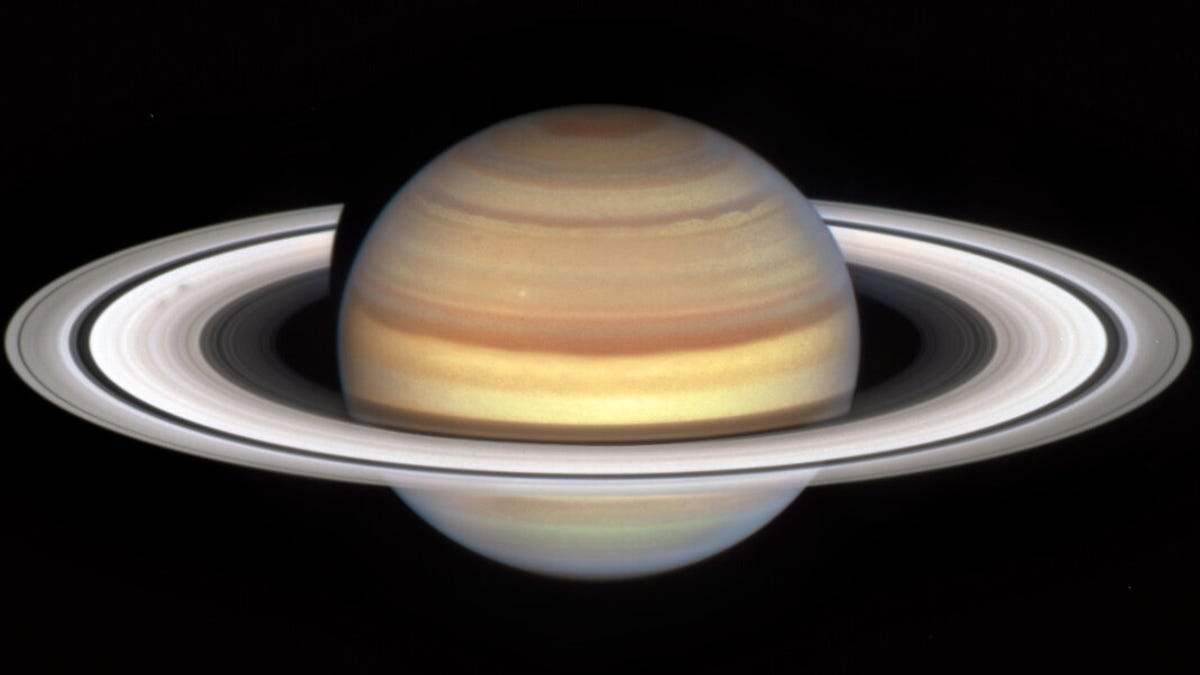
Hubble’s view of Saturn at the start of “spoke season.”
NASA, ESA and Amy Simon (NASA-GSFC); image processing by Alyssa Pagan (STScI)
There’s something unusual happening in a new Hubble Space Telescope image of scenic ringed planet Saturn. The view is spectacular all on its own, but zoom in on the left side of its rings and look for a couple of dark, shadowy spots. Those are “spokes.”
The enigmatic spokes appear and disappear seasonally. Saturn experiences four seasons, but it takes a long time to work through them, with each season lasting about seven years. The planet is crawling toward autumnal equinox in its northern hemisphere in early 2025, but it’s already entered into what NASA calls “spoke season.” It’s prime time for Hubble observations to investigate the spokes.
Hubble is a joint project from NASA and the European Space Agency. NASA released a video to go along with the new Hubble image. It includes footage showing the spokes rotating around Saturn.

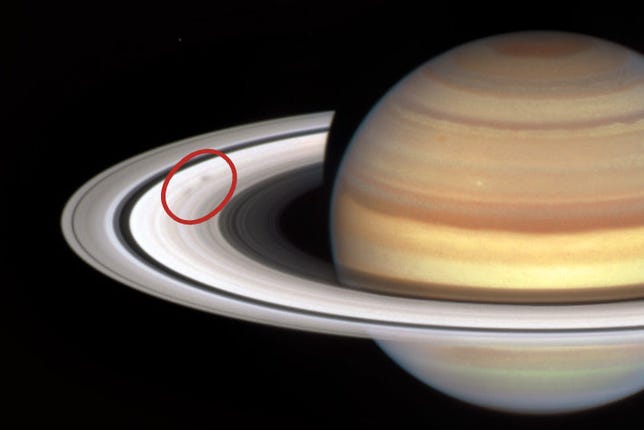 Enlarge Image
Enlarge Image
The red oval highlights the dark, smudge-like spokes in Saturn’s rings.
NASA, ESA and Amy Simon (NASA-GSFC); image processing by Alyssa Pagan (STScI); red oval by Amanda Kooser/CNET
Scientists first discovered the spokes — which can appear light or dark depending on the angle — thanks to NASA’s Voyager spacecraft in the 1980s. “The cause of the spokes, as well as their seasonal variability, has yet to be fully explained by planetary scientists,” NASA said in a statement on Thursday.
There’s a likely explanation for the strange features, and it involves Saturn’s magnetic field.
“Planetary magnetic fields interact with the solar wind, creating an electrically charged environment,” NASA explained. (This is how we get our nifty auroras on Earth.) “Scientists think that the smallest, dust-sized icy ring particles can become charged as well, which temporarily levitates those particles above the rest of the larger icy particles and boulders in the rings.”
NASA unveils 30 dazzling new Hubble space images for an epic anniversary

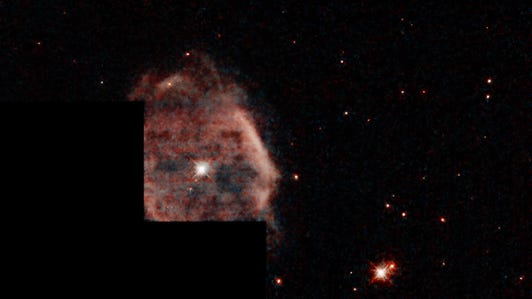

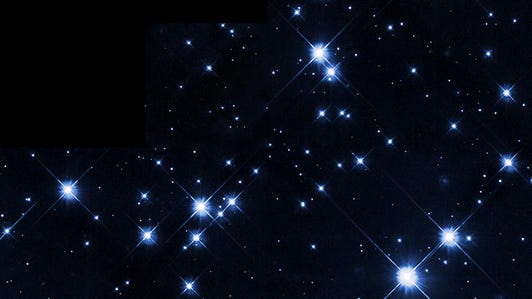

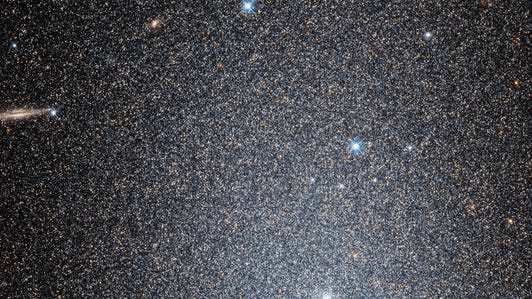
+27 more
See all photos
If that turns out to be true, the basic recipe for Saturn’s spokes is icy particles plus variable magnetic field plus solar wind plus seasonal changes. The spokes are expected to get more prominent as equinox approaches, giving scientists a chance for more observations and data collection that will explain what’s going on.
Other planets in the solar system (here’s looking at you, gas giants) have rings, but scientists haven’t seen similar spokes beyond Saturn. Said NASA senior planetary scientist Amy Simon, “It’s a fascinating magic trick of nature we only see on Saturn — for now at least.”
